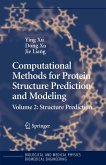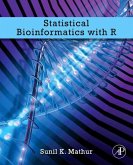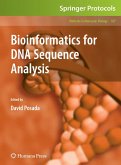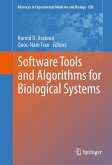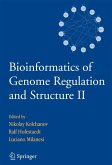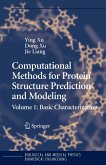This book presents state-of-the-art analytical methods from statistics and data mining for the analysis of high-throughput data from genomics and proteomics. It adopts an approach focusing on concepts and applications and presents key analytical techniques for the analysis of genomics and proteomics data by detailing their underlying principles, merits and limitations.
As natural phenomena are being probed and mapped in ever-greater detail, scientists in genomics and proteomics are facing an exponentially growing vol ume of increasingly complex-structured data, information, and knowledge. Ex amples include data from microarray gene expression experiments, bead-based and microfluidic technologies, and advanced high-throughput mass spectrom etry. A fundamental challenge for life scientists is to explore, analyze, and interpret this information effectively and efficiently. To address this challenge, traditional statistical methods are being complemented by methods from data mining, machine learning and artificial intelligence, visualization techniques, and emerging technologies such as Web services and grid computing. There exists a broad consensus that sophisticated methods and tools from statistics and data mining are required to address the growing data analysis and interpretation needs in the life sciences. However, there is also a great deal of confusion about the arsenal of available techniques and how these should be used to solve concrete analysis problems. Partly this confusion is due to a lack of mutual understanding caused by the different concepts, languages, methodologies, and practices prevailing within the different disciplines.
Hinweis: Dieser Artikel kann nur an eine deutsche Lieferadresse ausgeliefert werden.
As natural phenomena are being probed and mapped in ever-greater detail, scientists in genomics and proteomics are facing an exponentially growing vol ume of increasingly complex-structured data, information, and knowledge. Ex amples include data from microarray gene expression experiments, bead-based and microfluidic technologies, and advanced high-throughput mass spectrom etry. A fundamental challenge for life scientists is to explore, analyze, and interpret this information effectively and efficiently. To address this challenge, traditional statistical methods are being complemented by methods from data mining, machine learning and artificial intelligence, visualization techniques, and emerging technologies such as Web services and grid computing. There exists a broad consensus that sophisticated methods and tools from statistics and data mining are required to address the growing data analysis and interpretation needs in the life sciences. However, there is also a great deal of confusion about the arsenal of available techniques and how these should be used to solve concrete analysis problems. Partly this confusion is due to a lack of mutual understanding caused by the different concepts, languages, methodologies, and practices prevailing within the different disciplines.
Hinweis: Dieser Artikel kann nur an eine deutsche Lieferadresse ausgeliefert werden.


